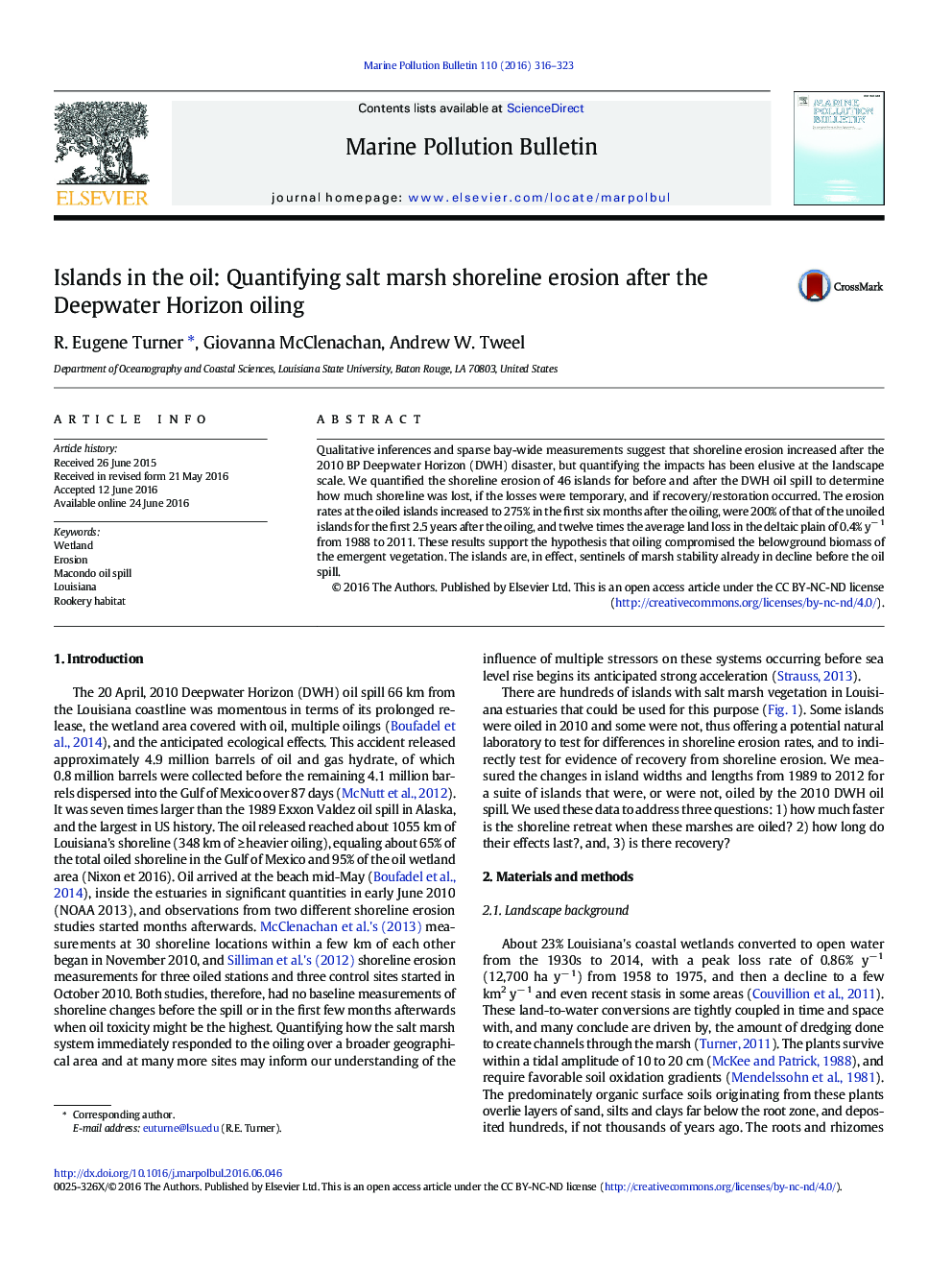| Article ID | Journal | Published Year | Pages | File Type |
|---|---|---|---|---|
| 6355683 | Marine Pollution Bulletin | 2016 | 8 Pages |
Abstract
Qualitative inferences and sparse bay-wide measurements suggest that shoreline erosion increased after the 2010 BP Deepwater Horizon (DWH) disaster, but quantifying the impacts has been elusive at the landscape scale. We quantified the shoreline erosion of 46 islands for before and after the DWH oil spill to determine how much shoreline was lost, if the losses were temporary, and if recovery/restoration occurred. The erosion rates at the oiled islands increased to 275% in the first six months after the oiling, were 200% of that of the unoiled islands for the first 2.5 years after the oiling, and twelve times the average land loss in the deltaic plain of 0.4% yâ 1 from 1988 to 2011. These results support the hypothesis that oiling compromised the belowground biomass of the emergent vegetation. The islands are, in effect, sentinels of marsh stability already in decline before the oil spill.
Related Topics
Physical Sciences and Engineering
Earth and Planetary Sciences
Oceanography
Authors
R. Eugene Turner, Giovanna McClenachan, Andrew W. Tweel,
